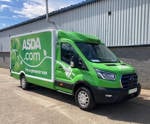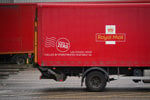Many fleets are considering solus or dual-branded deals with manufacturers, either for lease or outright purchase, as an opportunity to negotiate better rates or bigger discounts.
A Fleet News website poll revealed this week that up to a third are looking at the solus option. It’s a return to a trend that first started in the mid-1990s.
The upside is potentially huge savings; the downside is driver choice – how happy will they be with one option on the list?
For Norwich & Peterborough Building Society (N&P), this is a major stumbling block – it is sticking resolutely to its fleet policy of offering multi-brand options.
Its user-chooser approach allows company car drivers to select any model within their allowance band.
Chrissie Tyler and Sarah Harbour, HR analysts who are responsible for the 105 cars and 50 greys on the N&P fleet, say this is because fleet cars play a crucial role in the recruitment process.
“It’s more important that people get the car they want,” says Tyler.
Harbour claims this has not led to a conflict of interests for a company that has a carbon neutral policy. “The car scheme is an emotive area and we have to strike a balance between keeping staff happy and the business needs,” she says.
The two have overseen the fleet operation for the past three years after N&P merged the fleet manager’s position into the HR department.
“Cars are a huge benefit as a recruitment tool so moving it into HR was an obvious move – it’s now part of the benefits package,” says Tyler.
She admits that initially it was a daunting prospect. But joining ACFO – the Association of Car Fleet Operators – was a big help. Tyler recommends membership to other fleet decision-makers.
“Talking to others with the same problems was very useful,” she says.
N&P uses Alphabet to source and buy the cars and provide management information. The fleet is split 60% needs-based and 40% status with eight allowance bands – £250, £370, £400, £420, £450, £510, £650 and £970. Up to £420 is based on needs provision – above is status.
Cars are on a strict three-year change cycle. Most are changed within a three-month period; the last time was late 2007.
Alphabet also handles the maintenance schedule. Tyler and Harbour do the rest.
“We deal with a lot of the local garages and they are willing to give us a deal because they know we have a few cars,” says Tyler. “It’s good to have contacts that we can talk to about any issues.”
Following a meeting with the Energy Savings Trust (EST), N&P is considering ways to encourage drivers to think about smaller engined cars. It is also looking at mileage and CO2 targets.
The proposal is for Tyler or Harbour to meet the line managers of staff who exceed their mileage threshold to discuss options such as hotel stays for longer trips.
EST also offered tips on reducing the environment impact of N&P’s grey fleet. The company has tightened the rules on who qualifies for cars, which has reduced costs, and it now records details of everyone who takes the cash option, what they bought and car maintenance schedules.
It backs this up with spot checks on licenses, checking for endorsements.
It is also addressing the issue of staff who are not in the cash scheme using private cars for small business trips and claiming back the petrol money – far from ideal for a robust health and safety policy.
Tyler is looking at adding more pool cars to the fleet to combat the issue.
N&P is undergoing a company-wide project looking at its culture and how it sells benefits to staff, which will include running a series of awareness clinics.
Tyler believes a similar approach should be taken with the company car drivers, particularly on educating them about the implications of 160g/km to the company from April 2.
“It would cut down administration and motivate drivers to change their priorities and consider green issues,” she says.
Fleet policy changes are signed off by the N&P board. Most get the green light.
“We write the paper and make the recommendations,” Tyler says.
“We have to put up a good argument to win, but we go armed with all the information – it’s where ACFO has really helped.”
Green policy
In October 2007, N&P introduced a green policy to its fleet, bringing the operation in line with its broader environmental brand values as a carbon neutral company.
Dubbed ‘Green Premium’, it offers drivers a £10 increase on their monthly allowance if they choose a car that emits less than 150g/km CO2.
“We’ve seen our CO2 fall from an average of 168g/km to 151g/km over the last 18 months,” says Harbour.
The incentive was key: “Drivers are more concerned about the impact on their cash than they are about the tax implications for the company,” Harbour says.
So far, 43 drivers have taken the incentive.
Harbour adds: “Management would like to see a further increase in the incentive to bring CO2 down further as we are a carbon neutral company.”
But it’s not all about reducing CO2 emissions. N&P is one of a small group of organisations, which includes Honda, to recognise the impact of nitrous oxide (NoX) gases emitted by diesel cars.
“The industry isn’t responding to this – there’s too much focus on CO2,” she says.
Fact file
Name Norwich & Peterborough Building Society
Fleet manager Chrissie Tyler, Sarah Harbour (both HR analysts)
Fleet size 105 cars; 50 greys
Change cycle Three years
Lease or purchase? Lease
Management company Alphabet
















Login to comment
Comments
No comments have been made yet.